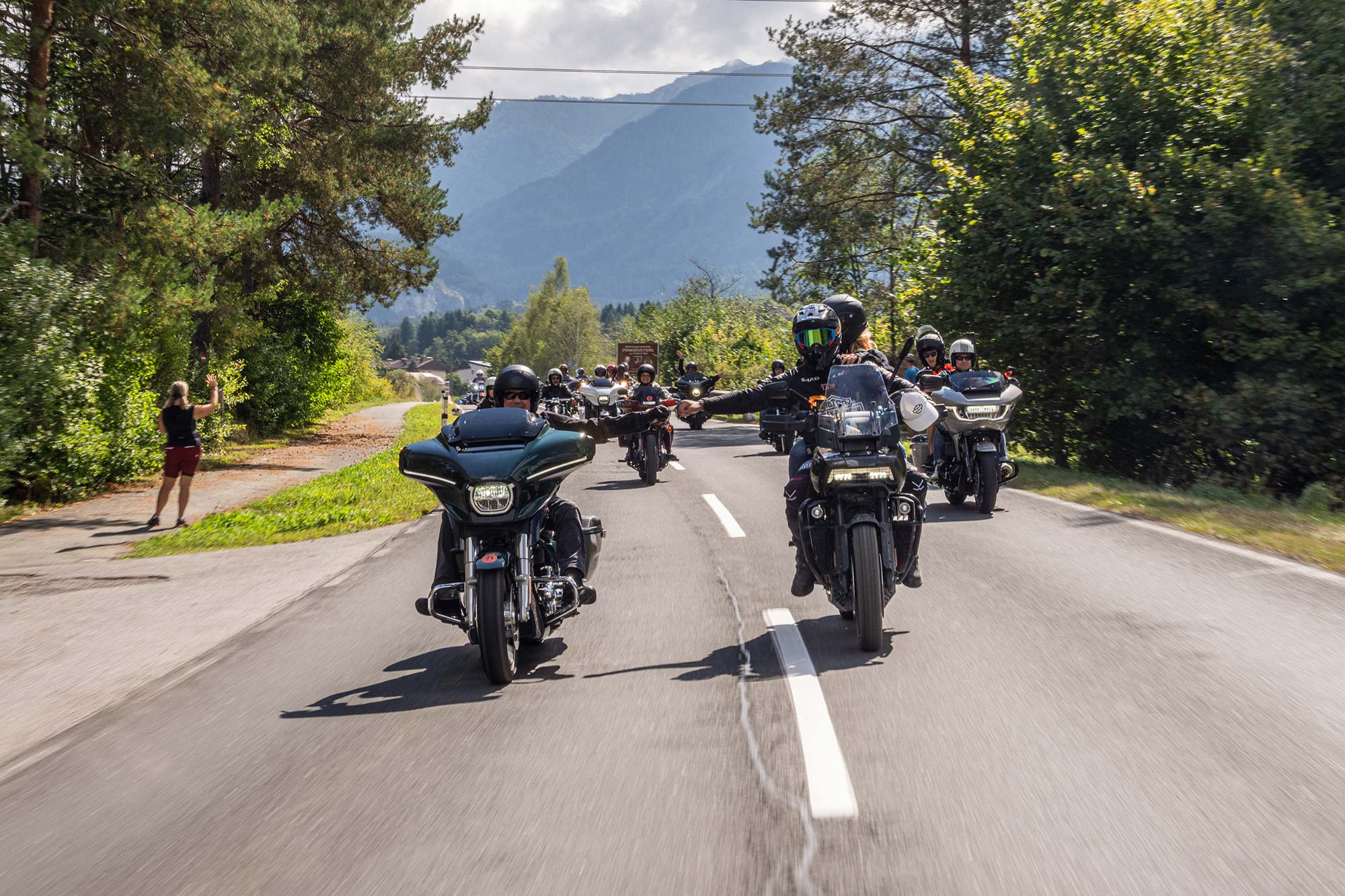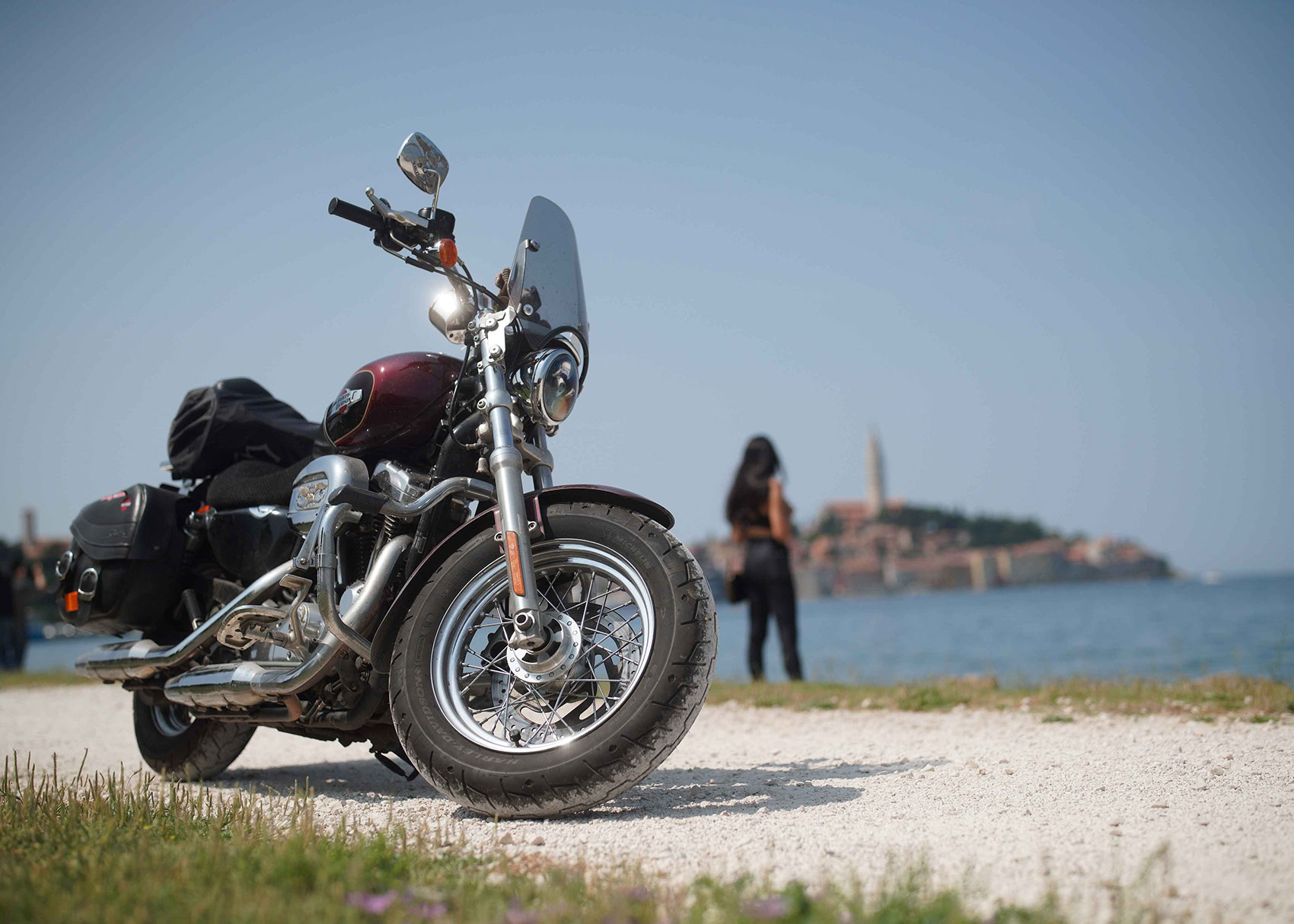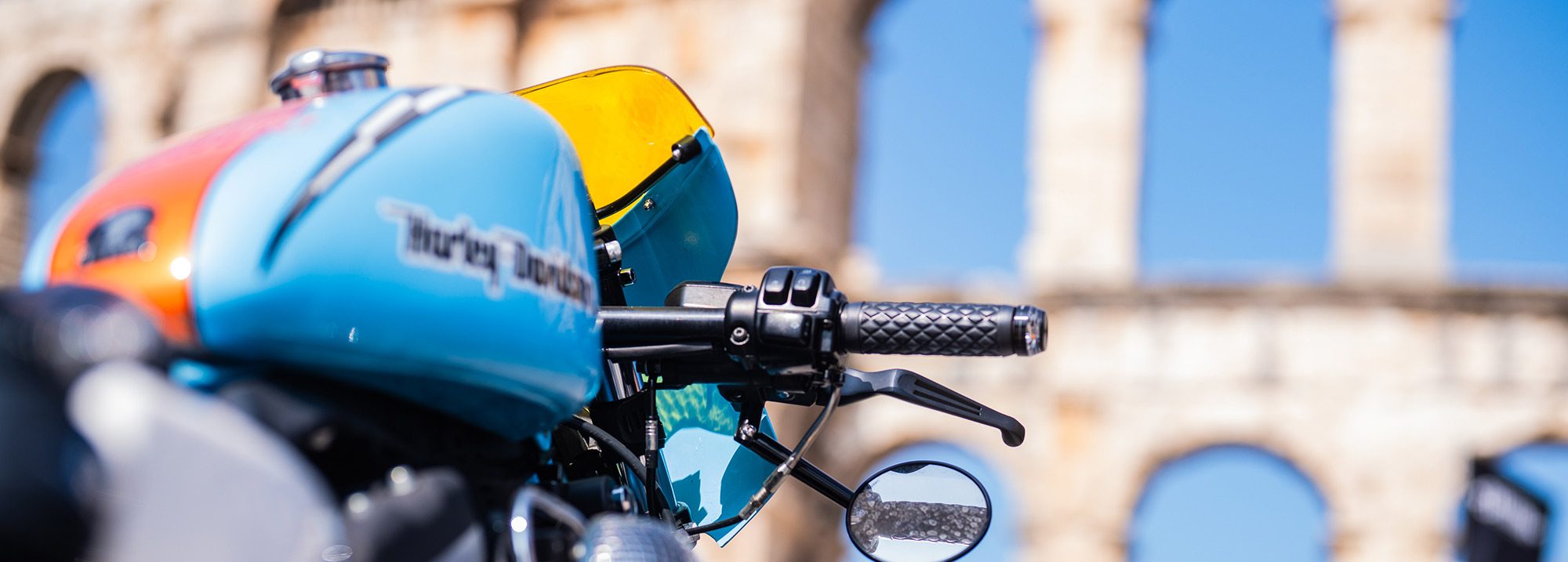
Not all bad
For some, the AMF period was strictly a dark age from which Harley-Davidson® was fortunate to emerge. But there are layers to what proved to be a complex time in history.
In 1965, H-D® went public. Honda and others were coming on strong with affordable and reliable rides, and the Motor Company needed capital to compete. By 1968, H-D executives were justifiably concerned of a hostile takeover by Bangor Punta, an international conglomerate known for acquiring and liquidating businesses. The other suitor was American Machine and Foundry (AMF) of White Plains, New York. With an offer of US$22 million and a promise from CEO Rodney Gott to keep H-D on the road, President William H. Davidson urged stockholders to accept the deal, which was inked on January 8, 1969.
AMF placed Harley-Davidson in its Recreational Products Group, along with its lucrative bowling pin-setting machines, Voit sports equipment, and other brands. Gott wanted to balance AMF manufacturing toward leisure products and away from industrial equipment. But AMF found a slew of problems with Harley-Davidson, including bloated inventory, quality issues, and a sometimes-deaf ear to dealers. This led to a static customer base that had grown used to H-D motorcycles, which never seemed to change.
AMF’s own strategies, however, would prove equally unfortunate. At the centre of the new plan was a high-volume manufacturing pace that Harley-Davidson was unprepared to handle. Worse yet, customers did not show a demand for the increase. The dealer relationship was made worse by AMF’s new policy of requiring dealers to purchase less-desirable lightweight models for each Sportster®, Super Glide® or Electra Glide® ordered.
AMF said Milwaukee didn’t understand business; Milwaukee said AMF didn’t get motorcycles. Finger pointing was rampant.
But AMF also poured lots of cash into development of new products, including an overhead cam 1100cc engine and Project Nova, an entirely new V-4 water-cooled bike. Though neither product made it to market, components developed for Nova lived on in the popular FXRT Sport Glide® of the early 1980s. Most importantly, Project Nova introduced CNC machining and other manufacturing capabilities that brought improved H-D quality. Part of the overall product plan born in the 1970s was a new V-Twin engine introduced for the 1984 model year. To this day, the Evolution® is sometimes described as “the engine that saved Harley-Davidson”.
Budgets to expand H-D’s traditional product line were tighter but led to new thinking in wheels, paint schemes and other trim. Examples were the 1977 Low Rider® and the now-famous 1971 FX Super Glide, which married a Big Twin engine to a lighter Sportster-style front fork. The era also brought the 1980 FLT Tour Glide™. With its frame-mounted fairing and the fi rst rubber isolation engine mounts, it’s the ancestor of today’s Road Glide® models.
In 1980, word spread that AMF was looking for an exit. Vaughn Beals, who came in with AMF and was vice-president by this time, was lobbying AMF to sell Harley-Davidson back to him and a team of investors. Beals and 12 other members of H-D management completed a deal to buy H-D on June 16, 1981 for $75 million. Employee morale improved immediately. A new ad slogan trumpeted: “The Eagle Soars Alone.” As part of the deal, HarleyDavidson took ownership of the factory in York, Pennsylvania. Without York, H-D could never have realised the production gains of the 1980s and ’90s.
But not all was well in the wake of the ‘buyback’. The motorcycle market was sputtering, the overseas competition was making better inroads than ever into the US, and a recession was now in full bloom.
Beals and others rolled up their sleeves and got to work. The factories became leaner, and a new motorcycle was introduced for 1984 called the Softail®. A new factory-sponsored motorcycle club, Harley Owners Group®, strengthened the bonds with dealers and customers. Beals and his team doubled down on a philosophy of listening to motorcyclists, the very reason that H-D had stayed in business since 1903.
During the early and middle 1980s, word travelled among dealers and their customers: Harley-Davidson was back, better than ever. And without the AMF ownership, it might have become another footnote to history.
Tags:
Read more tales from the Harley Owners Group!
Events calendar
Read on for details of rallies and events taking place around the world. More regional events to be announced soon – watch this space!
Croatian Sunshine
The 31st European H.O.G. Rally returned to celebrate under blue skies in Medulin from 12-15 June 2025
In the pink
Creative imaginations were let loose on a spectrum of Harley models, with the top entries showcased along the marina


